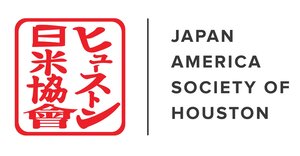National Chocolate Chip Day has JASH craving sweets. For Week 8 of Friday Favorites, we share with you our favorite Japanese confections.
Castella/Kasutera (カステラ)
Cream Puffs (シュークリーム)
Ganache (生チョコ; なまチョコ)
Pucchin Pudding (プッチンプリン)
Shaved Ice (かき氷; かきごおり)
Strawberry Daifuku (苺大福; いちごだいふく)
Read staff comments below for our top choices for Japanese sweets.
Enjoy!
Cream Puffs (シュークリーム)
Cream puffs have been my favorite Japanese sweet since childhood. A pastry shop used to be near the house where I grew up and they sold cream puff there for only 100 yen ($1) at that time.
I still love them and enjoyed eating different flavors of cream puffs at convenient stores when I lived in Japan. The cream puffs at convenience stores were usually cheaper and easier to get than at pastry shops. My favorites are the cream puffs with fresh cream.
Here in Houston, I buy cream puffs from Beard Papa as a special treat. Although they are originally from Japan, I had it for the first time in Houston. You can choose what shell and cream filling and they will stuff the cream puffs in front of you. My favorites are original shell with vanilla cream filling, and original shell with green tea cream filling. Recently, I tried crispy almond shell with vanilla cream filling, and it was really great!
KEIKO
Image from Glico
Pucchin Pudding (プッチンプリン)
My favorite sweets is Pucchin Pudding (プッチンプリン) by Glico. It is Japanese pudding cup that has been sold since 1972.
While you can eat the pudding from a cup with spoon, this particular brand has a unique shaped cup and it has small tub on the bottom. When you flip it over on a dish and click the tub, the pudding will slide out, leaving the shape intact and caramel on top. This makes sure that the pudding maintains its perfect shape to enhance your appetite!
The name “Pucchin” comes from the clicking sound the tub makes. I have never seen this product in the US, so I have a huge craving for プッチン!
Shaved Ice (かき氷; かきごおり)
My favorite Japanese sweet/dessert is shaved ice (かき氷; kakigori). While most places in the U.S. have snow cones and the like, Japanese shaved ice is quite different.
Texture wise, kakigori is much softer, shaved in thin sheets that maintain its pleasant, icy crunch as opposed to the U.S.’s chipped ice pieces. This allows the flavoring to soak into the treat rather than just running over it and sitting at the bottom. As for the syrup, many of the places I would visit for kakigori in Japan would create their own out of fruit and condensed milk instead of using artificial syrups.
Lastly, toppings! Kakigori places tend to offer a variety of topping options such as fruit, soft serve, or condensed milk. When I would buy matcha kakigori, I would also order it with anko, sweet bean paste.
The closest I have gotten to kakigori in the U.S. is Hawaiian shaved ice or buy purchasing pre-made containers of shirokuma ice from Seiwa Market.
MEGUMI
Image from Gnavi.co.jp
Ganache (生チョコ; なまチョコ)
My favorite Japanese sweet is Japanese ganache called 生チョコ (なまチョコ; namachoco).
It is a mixture of chocolate and fresh cream and has a soft texture. In western countries, ganache is used to make truffles and other chocolate candies, or as a filling in cakes. In Japan, however, ganache is processed to be eaten as soft, unrefined chocolate.
This style of ganache was first produced by a small confectionery store called Silsmaria in Yokohama in 1988. Nowadays, various Japanese confectionery stores, chocolate companies and even convenience stores sell a wide variety of the treat.
Although it is difficult to purchase this type of ganache outside Japan, as it requires refrigeration and has short shelf life, you may be able to find Meiji’s Meltykiss (Premium Chocolate), which offers a similar smooth texture, in Asian grocery stores in the US.
MIDORI
Image from Ishimura.co.jp
Strawberry Daifuku (苺大福; いちごだいふく)
My favorite sweet from Japan is strawberry daifuku. It is created with a large strawberry and azuki bean filling covered with soft mochi.
Although it is unknown who invented this treat, it is a comparatively new product and therefore created quite a sensation. Nobody had ever come up with the idea to combine fruit and azuki bean paste jam although these two ingredients existed as reasonable and convenient items for a long time.
PATSY
Image from Sakaeya
Castella/Kasutera (カステラ)
I grew up in a household where Japanese kasutera was talked about as the ultimate treat.
Cake without icing seemed sacrilegious at a young age. However, over time, I have come to appreciate the divine simplicity of this traditional Japanese confectionery.
Made with sugar, flour, egg foam and mizuame syrup (yes, no butter or oil), kasutera is lighter than pound cake and finer than spongecake. It was introduced to Nagasaki, Japan by Portuguese merchants in the 16th century, and its name is derived from the Portuguese Pão de Castela, meaning “bread from Castile.”
Today, it is common to find the subtly sweet kasutera in many variations, with flavors such as chocolate, matcha green tea, brown sugar, or honey.
Kasutera is usually sold in long rectangular boxes that make lovely gifts.
It can also be molded into various shapes. Baby Kasutera, a bite-sized version of the cake, is a popular festival food.
For me, kasutera is a taste of nostalgia,!







